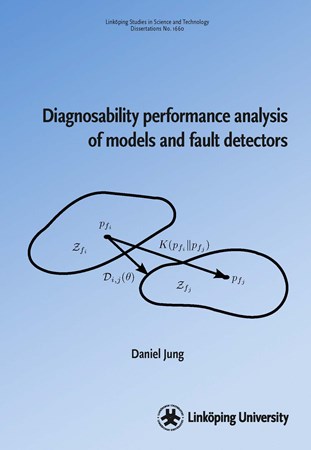• optimize usage while maximizing the life of key components, such as batteries,
• monitor complex and automated processes and enable fail-safe control to avoid accidents,
• the development of various services such as predictive planning of service and maintenance to minimize the risk of unplanned stops,
• Guide a technician during troubleshooting to minimize the time in the workshop.
The Division of Vehicle Systems is active in fault diagnosis and forecasting in both research and education. The research activities includes both theoretical aspects and method development for fault diagnosis, mainly in model-based diagnosis of nonlinear systems and structural methods, but also in data-driven prognostics and hybrid fault diagnosis that combines physical models with machine learning.
A large part of the research activities in fault diagnosis and prognostics are conducted in collaboration with various industrial partners and have dealt with several different types of diagnostic applications, such as emissions-related vehicle diagnostics, engines, batteries, mining machines, electric machines, and gas turbines.
Model-based diagnosis of complex systems
The principles of model-based diagnosis are about using a mathematical model of the system to be monitored to calculate residual values to be able to draw conclusions about various fault diagnoses. To be able to make reliable decisions about which faults have occurred, as well as minimize the risk of false alarms and missed detections, it is also important to be able to handle model uncertainties and different types of noise. The ability to construct residuals depends on what redundancy is available in the system, in the form of available sensor signals together with a model of the system. An important question is then what kind of residuals can be constructed, i.e., what detectability and isolability performance can be achieved.Vehicular Systems have long been active in research in the field of fault diagnosis of both linear and nonlinear systems. One example is the research on the use of structural methods to effectively analyze complex dynamic models for sensor placement and computer-aided design of residuals to detect and isolate different types of errors. The research on structural methods for the analysis and design of diagnostic systems for nonlinear systems, for example modeled using ordinary differential equations or differential-algebraic equations, has, among other things, been compiled in a toolbox (Matlab/Python).
Machine learning for diagnosis and prognostics
Data-driven fault diagnosis is about building models from historical data, such as sensor data from different failure scenarios, to be able to predict and classify when a failure occurs. Data-driven diagnosis is complicated by the fact that it can be difficult to collect representative data from relevant failure scenarios and therefore the choice of data-driven model and analysis of data is important to be able to calculate reliable diagnoses and to be able to predict the remaining useful life.The Division of Vehicle Systems conducts research on data-driven fault diagnosis and prognostics. The purpose is to estimate the remaining life of a system or component, but also how much uncertainty there is in the estimates to, for example, be able to plan when it is best to carry out service and maintenance.









